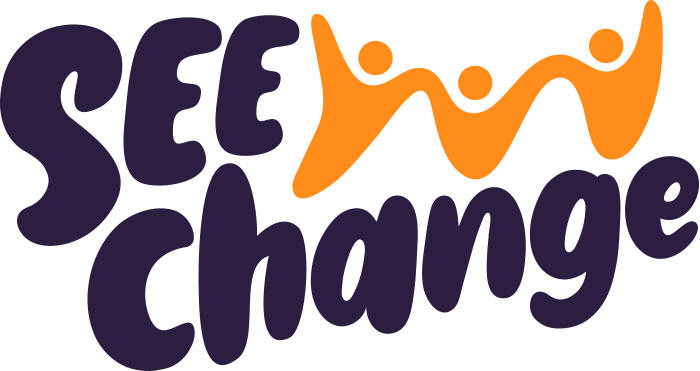Buy No Clothes Challenge
Why take the Challenge?
Did you know …
On average, every Australian buys 56 items of clothing, including socks and underwear, each year, most of which are made from non-sustainable, non-durable materials. This makes us among the biggest purchasers of clothing in the world.
Each Australian disposes an average 23 kilograms of clothing to landfill, either here or overseas, each year. This equates to about 227,000 tonnes of discarded clothing.
One way to reduce clothing waste is for everyone to buy less clothes – hence the Buy No Clothes Challenge. Taking the challenge will lead to reduce carbon emissions (as many clothes are made from fossil fuels) as well as reduced clothing waste going into landfill.
Reducing clothing waste is like playing a game of snakes and ladders. There are things that will help us achieve no clothing waste (ladders) e.g. buying less. There are also things that will generate more clothing waste (snakes) e.g. going into shops when we don’t need any more clothes. During the challenge, we will share ideas on how to reduce clothing waste.
Who is running the challenge?
The challenge is being run by the WasteLess group, which is part of SEE Change, an environmental charity, which aims to educate Canberrans about ways we can all help reduce waste.
What’s involved?
During October, you should aim to buy no clothes at all. If you find that you do need to add to your wardrobe, try buying second hand, swapping clothes, renting, upcycling your existing clothes or buying quality clothes that won’t end up in landfill. We will cover these themes in our weekly emails.
By registering, you will receive weekly emails during October 2024 with ideas on how to reduce clothing waste and to buy no clothes.
REGISTER HERE
If you have any trouble with this link, please send an email to wasteless@seechange.org.au to register.
We would love to hear about your experience during the Buy No Clothes Challenge. Please send us an email to wasteless@seechange.org.au.
Clothing Waste Film Night
As part of the Buy No Clothes Challenge, the WasteLess group is running a short film night on Monday 14 October from 6pm to 7:30pm in Dickson. At the film night some short films will be shown covering different aspects of clothing waste, including the problems, challenges and the solutions. For more details of the film night and how to register, go here
Frequently Asked Questions
Can I purchase second hand?
You probably have more than enough clothes in your wardrobe that you don’t actually need any more clothes. However, if you find that you do need some new clothes, purchasing second hand is better than buying new.
Can I take on the challenge after October 1st?
Yes, definitely. Taking the Buy No Clothes challenge will be a personal journey, meant to help you reset your consumption habits. This action can be taken at any time, and WasteLess is here to support you on your path whenever you start the challenge. Once you have registered, you will receive weekly emails with ideas and encouragement to continue the challenge.
What are the numbers for the global clothing industry?
92 Million tonnes of textile waste is produced every year
The fashion industry is responsible for 20% of global waste water
Dyeing and finishing fabrics contribute 3% of global CO2 emissions and 20% of global water pollution
Globally, only 12% of the material used for clothing is recycled
Fabrics such as polyester, nylon and acrylic shed microplastic fibres when washed, which enter waterways
Microplastics in waterways and oceans harm aquatic ecosystems including coral reefs – the fashion industry is responsible for 35% of oceanic primary microplastic pollution
Synthetic fabrics take hundreds of years to decompose.
How can I experiment with fashion while participating in the Buy No Clothes Challenge?
Taking the challenge provides us with the space to be very creative with the clothes and accessories we already have. Try mixing shirts, blouses, t-shirts, skirts, dresses, suits and shoes with different scarves, brooches, ties, cuff links, socks and whatever else has been languishing in your cupboard for a while. You could also swap with friends, or join a local Facebook mobile clothes-swap library.
What should I do if I’m going to a wedding or a special event?
It’s really important to re-wear event clothes (Jane Fonda does it). Consumers spend billions of dollars each year on “wear-once” event wear for weddings, holidays, and special occasions. Much of this clothing ends up in landfill after one outing. There might be an urge to splash out for a special event, but you don’t have to buy new to look nice.
Instead, re-wear, re-style and love again what you have; choose second hand first; or rent something special for your event.
Some useful links:
https://seechange.org.au/clothing-waste Some ideas for reducing clothing waste from the SEE Change WasteLess group.
ABC article starting with a woman who pledged not to buy new clothes for 12 months.
https://www.cleanup.org.au/top-10-ways-to-reuse-reduce-and-recycle-your-clothes How to reduce clothing waste
Why clothes are so hard to recycle https://www.bbc.com/future/article/20200710-why-clothes-are-so-hard-to-recycle
https://www.panaprium.com/blogs/i/reduce-clothing-waste
https://www.environmental-action.org/blog/5-tips-to-reduce-clothing-waste/
https://www.sustainyourstyle.org/en/reducing-our-impact
https://sustainability.ncsu.edu/blog/changeyourstate/closets-afterlife-5-ways-reduce-clothing-waste/

